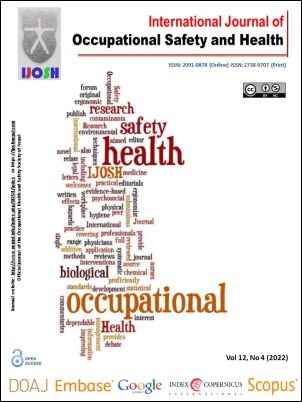Anthropometric study of hand parameters for redesigning surgical instruments to combat ergonomic challenges in an operation theatre
DOI:
https://doi.org/10.3126/ijosh.v12i4.43756Keywords:
hand anthropometry, handgrip strength, pinch strengthAbstract
Introduction: Anthropometric hand dimensions are used in the design of hand instruments for improving the efficiency and human comfort of surgical equipment and instruments. Instruments built for large male hands make it more difficult for petite female hands to operate them, which reduces their productivity and increases the risk of musculoskeletal diseases. So, the present study was undertaken to evaluate the differences in anthropometric and biomechanical parameters between the dominant hands of adult Indian males and females.
Methods: The study was conducted on 335 Indian health care professionals of which 168 were males and 167 were females. Various anthropometric and biomechanical parameters were measured on the dominant hand of all the individuals included in the study. Length, breadth and span of a hand, as well as wrist circumference, were measured by measuring tape while handgrip strength and pinch strength was recorded by Jamar dynamometer & Jamar pinch gauge respectively. Obtained data were analyzed by applying the t-test SPSS version 27. We considered P-value <0.05 as statistically significant.
Results: A higher statistically significant difference (<0.05) was found in hand anthropometric and biomechanical parameters amongst dominant hands of Indian male and female health care professionals.
Conclusion: The present study was gender-based. All the anthropometric and biomechanical parameters were found to be of dimensions in males as compared to females. This study provides baseline anthropometric & biomechanical values of the Indian hand that will help manufacturers to redesign instruments to improve efficiency and prevent the risk of musculoskeletal disorders amongst health care professionals.
Downloads
Downloads
Published
How to Cite
Issue
Section
License
Copyright (c) 2022 Shikha Singh, Dilshad Usmani, Sanjeev Kumar Jain, Saurabh Chaudhary, Hina Nafees

This work is licensed under a Creative Commons Attribution-NonCommercial 4.0 International License.
This license enables reusers to distribute, remix, adapt, and build upon the material in any medium or format for noncommercial purposes only, and only so long as attribution is given to the creator.





